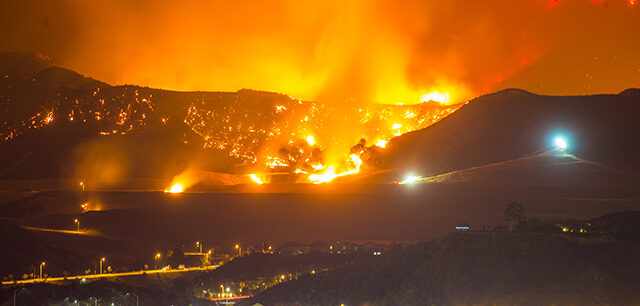This has been an unprecedented year for extreme heat events. Californians experienced several heat waves throughout the summer, all-time temperature records were broken across the state, and the state’s power grid was pushed to its limit. Now that winter is approaching, California has a good opportunity to prepare for the extreme heat that will return next summer and in future years.
As climate change progresses, extreme heat events will become more frequent, more severe, and longer in duration. They will also pose major public health risks: extreme heat can exacerbate problems like respiratory and cardiovascular diseases and diabetes, and put sensitive populations like the elderly, children, manual laborers, and people experiencing homelessness at risk. In recognition of the need to manage these risks proactively, California recently adopted an action plan to protect residents from extreme heat, and several new state and federal programs are focusing on three overarching goals.
- Making workplaces safer. The federal Occupational Safety and Health Administration (OSHA) has begun to develop heat-specific safety standards for indoor and outdoor workers. OSHA also announced a National Emphasis Program for increased enforcement and inspections to address heat-related workplace hazards. At the state level, California’s Division of Occupational Safety and Health (Cal/OSHA) has been developing an Indoor Heat Illness Prevention Standard to accompany existing Outdoor Heat Illness Prevention Standard. In light of the new OSHA initiatives, Cal/OSHA also increased inspections of both indoor and outdoor workplaces during the September 2022 heat wave. New legislation (AB 2243) directs Cal/OSHA to develop protection standards for ultra-high heat conditions (defined as above 105 degrees Fahrenheit in an earlier version of the legislation).
- Cooling down communities. In 2021, the US Department of Health and Human Services expanded the Low-Income Home Energy Assistance Program to cover extreme heat mitigation measures such as air conditioner purchases, high electricity bills due to cooling, and use of public spaces as cooling centers. Recent federal and state support for urban forestry recognizes the importance of trees and green spaces in lowering temperatures. And a new California law allows local governments to create climate resilience districts (SB 852) with financing power; this could open the door to additional local heat resilience projects.
- Improving public awareness and emergency response tools. During last summer’s heat waves, Cal/OSHA issued press releases highlighting the risks of extreme heat for workers. Also, a new California law (AB 2238) mandates the creation of a heat wave ranking and warning system. On the federal side, the National Integrated Heat Health Information System has launched a web portal to raise public awareness, and the US Department of Health and Human Services now publishes a monthly climate and health outlook for health professionals.
These efforts are being supported by substantial state and federal funding. California’s 2021 Climate Resilience Package included $800 million to build resilience against extreme heat through urban greening, the Low-Income Weatherization Program (LIWP), and community resilience centers. An additional $365 million was allocated in 2022 for an Extreme Heat Package that includes support for employer and worker outreach, long-term care and childcare facilities, and LIWP’s Farmworker Housing Component. At the national level, the Federal Emergency Management Agency’s (FEMA) Building Resilient Infrastructure and Communities (BRIC) program—which provides grants for proactive disaster resilience projects—received a $2.5 billion budget for 2022, and the US Forest Service (USFS) received $1.5 billion from the Inflation Reduction Act for its Urban and Community Forestry Program.
Effective implementation of new heat-related programs will require collaboration among environmental, occupational, and public health sectors. Establishing more robust real-time public health data collection systems to assess risks can help target resources. The state should develop plans to evaluate existing programs and build accountability frameworks. In addition, improved outreach to the general public and strong emergency response tools can help communities and sensitive populations minimize heat-related health risks.





